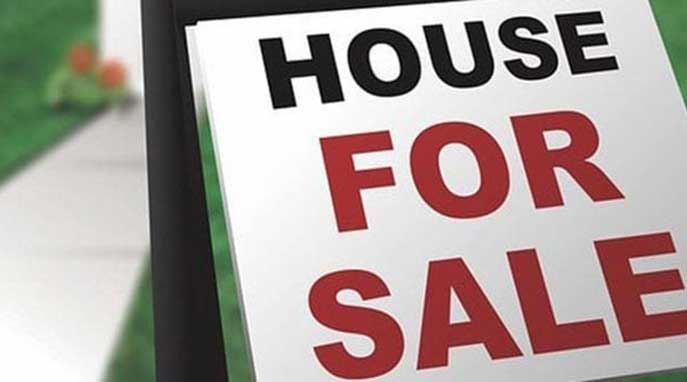 As economists Jake Fuss and Tegan Hill have warned, the macro effects of government stimuli to address COVID-19 lockdowns are starting to emerge.
As economists Jake Fuss and Tegan Hill have warned, the macro effects of government stimuli to address COVID-19 lockdowns are starting to emerge.
In Canada, they have taken the form of an overheating housing market. With mortgage rates plunging to historic lows, the demand for residential real estate is driving prices through the roof.
As if there were no other economic toolbox solutions, the federal government promises subsidies for home buyers, sellers and developers. This entails more public spending, more deficits and more debt. Rather than distorting markets further, Canada needs an economy free from nonsense restrictions on investment and entrepreneurship.
To mitigate the economic downturn caused by the pandemic, the Bank of Canada cut interest rates three times in 2020. As a result, the five-year fixed-rate mortgage, the most common mortgage in Canada, has remained below two per cent over the past year.
Canadians, predictably, rushed to seize the opportunity. No one can blame them, given that the prospect of becoming homeowners gets more difficult with every generation. What happened next is Economics 101: a demand shock overwhelmed the supply and prices rose. The average home is 25 per cent more expensive than in 2020.
But that’s not all. Pandemic-containment measures also changed the housing market’s behaviour.
While the monthly cost of homeownership declined, lockdowns prevented families from spending on travel, leisure, restaurants and other treats. Then remote work and online education encouraged households to invest those pandemic-induced savings in bigger homes, where they were spending all day. With skyrocketing prices, speculation kicked in.
The pent-up demand for new and old houses isn’t restricted to metropolises. Housing prices are also surging in smaller cities hundreds of kilometres away, pricing out decades-long residents.
Before the pandemic, housing unaffordability was already a concern in major residential real-estate markets such as Toronto and Vancouver. Now, the heated market is pricing out even more low-income households and millennials, entrenching existing inequalities.
As housing unaffordability increases, families’ financial instability and homelessness worsen. Usually, these problems exert pressure on governments at all levels to provide relief, unemployment mitigation and subsidized housing. A larger welfare state ensues.
Increased focus on residential real estate crowds out investment in productive areas such as commerce and industry.
“That is fundamentally not healthy,” Bank of Montreal economist Saul Gautieri explains. “A much greater share of our economy is now devoted to residential construction as opposed to nonresidential structures, or just straight spending on machinery and equipment.”
The other obvious concern is the emergence of a housing bubble. In this case, once it bursts, homeowners will be left holding mortgages that exceed the values of their homes. That’s when defaults start cascading, and families take decades to recover.
In February 2021, Bank of Canada governor Tiff Macklem acknowledged that rising prices can lead to a housing bubble. But he argued the priority was that interest rates remain low until economic activity and employment rates return to pre-pandemic levels.
Prime Minister Justin Trudeau and other policy-makers are focusing on feeding the housing appetite. In October 2020, the federal government launched a $1-billion initiative for new so-called affordable units.
Neither of them addresses the root causes. Macklem and Trudeau have opted for the easy path of fiscal stimulus and short-term aid, expanding the government’s scope while undermining the private sector.
Canada’s housing market is overheating due to external distortions, namely aid packages and monetary stimuli. If the Bank of Canada governor keeps interest rates low while the economy remains at a standstill, housing prices will continue to soar.
One way to stop housing speculation is by raising mortgage down payments and adding stricter borrowing requirements like New Zealand is doing to prevent a housing bubble of its own.
Aside from demand surplus, zoning restrictions and taxes contribute to higher housing prices. Faced with high building costs, developers prioritize high-end units in already affluent areas. To incentivize affordable housing, officials need to slash taxes and red tape.
Of course, this isn’t enough to stem the tide. The elephant in the room is the sluggish economy. As long as lockdowns hamstring Canadians’ productivity and consumption, low-interest rates will keep pushing capital to residential real estate.
One doesn’t put out a fire by throwing on more fuel, but that’s precisely what the feds are doing.
Canadians are still struggling with the pandemic’s economic impact. They don’t need another worry looming over them: whether they will be able to keep a roof over their heads.
Paz Gómez is a research associate with the Frontier Centre for Public Policy.
Paz is one of our Thought Leaders. For interview requests, click here.
The views, opinions and positions expressed by columnists and contributors are the authors’ alone. They do not inherently or expressly reflect the views, opinions and/or positions of our publication.
© Troy Media
Troy Media is an editorial content provider to media outlets and its own hosted community news outlets across Canada.


